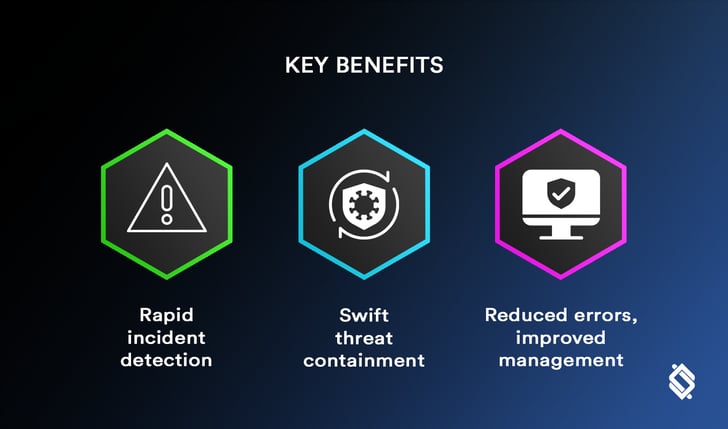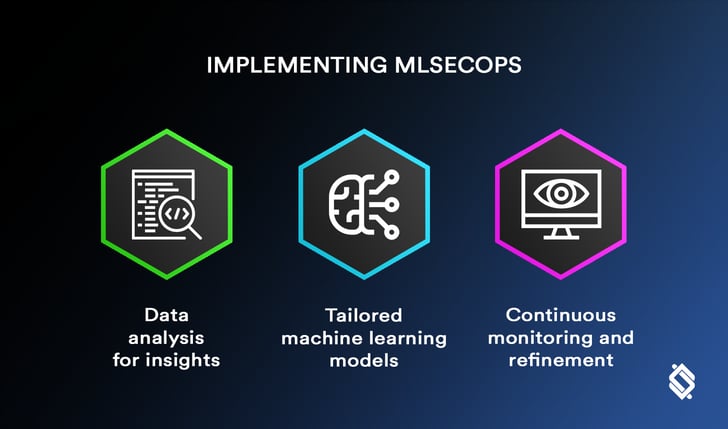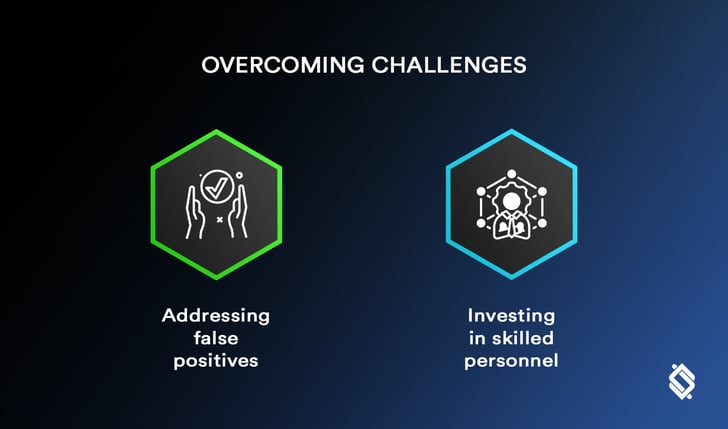In the ever-evolving landscape of cybersecurity threats, technology company leaders are constantly seeking innovative solutions to safeguard their digital assets. One such cutting-edge approach gaining prominence is MLSecOps – Machine Learning Security Operations. MLSecOps harnesses the power of artificial intelligence to automate various facets of incident response, revolutionizing the way organizations detect, contain, and remediate cybersecurity threats. In this post, we will explore the profound benefits of embracing MLSecOps, shedding light on how it can significantly enhance incident detection and mitigation strategies.
Understanding MLSecOps: A Paradigm Shift in Incident Response

The Evolving Cyber Threat Landscape
The digital era has ushered in unprecedented connectivity and efficiency, but it has also given rise to sophisticated cyber threats. Traditional incident response methods, relying heavily on manual intervention, often struggle to keep pace with the speed and complexity of modern cyberattacks. Herein lies the impetus for embracing MLSecOps – a paradigm shift that leverages machine learning algorithms to automate and optimize incident response workflows.
The Essence of MLSecOps: Automation and Machine Learning Synergy
At its core, MLSecOps integrates automation and machine learning to empower cybersecurity teams. Machine learning algorithms analyze vast datasets to identify patterns, anomalies, and potential threats. By automating incident response processes, MLSecOps minimizes reliance on human intervention, thereby addressing the key challenges faced by organizations – response time, human error, and the overall efficiency of incident management.
Learn more about the fundamentals of MLSecOps
The Key Benefits of MLSecOps

1. Accelerated Incident Detection
MLSecOps excels at rapid threat detection through continuous monitoring and analysis of network activities. Machine learning algorithms can identify subtle deviations from normal behavior, enabling the detection of potential threats long before they escalate. This proactive approach significantly reduces the time gap between the occurrence of an incident and its detection, bolstering the organization's ability to respond swiftly.
2. Minimized Response Times
In a cyber threat landscape where seconds matter, MLSecOps shines by automating the response process. Automated incident response mechanisms can execute predefined actions in real-time, containing the threat before it can cause substantial damage. By minimizing response times, organizations can thwart attacks swiftly and effectively, mitigating potential financial and reputational losses.
Explore strategies for rapid incident detection
3. Reduced Human Errors
Human errors are an inevitable aspect of manual incident response. MLSecOps alleviates this concern by automating repetitive and rule-based tasks, allowing cybersecurity professionals to focus on more complex decision-making processes. This not only decreases the likelihood of errors but also enhances the overall accuracy and efficacy of incident response strategies.
4. Improved Incident Management
MLSecOps transforms incident response into a more strategic and manageable process. By leveraging machine learning algorithms, organizations can categorize and prioritize incidents based on severity and potential impact. This intelligent categorization ensures that resources are allocated efficiently, addressing critical threats promptly and optimizing the overall incident management lifecycle.
Real-world results with MLSecOps: Securing government against adversarial AI
Implementing MLSecOps: A Pragmatic Approach

1. Data Integration and Analysis
Effective implementation of MLSecOps begins with robust data integration. Security teams must aggregate and normalize data from various sources, including network logs, endpoint data, and threat intelligence feeds. Machine learning models rely on comprehensive datasets to discern normal from abnormal patterns accurately.
2. Building Machine Learning Models
Developing and fine-tuning machine learning models tailored to the organization's specific cybersecurity needs is crucial. This involves training models to recognize known threats, anomalies, and emerging attack patterns. Continuous refinement of these models ensures adaptability to evolving cyber threats.
A Step-by-Step Guide to Building Your First Machine Learning Model
3. Orchestrating Automated Responses
Automation is the linchpin of MLSecOps success. Security teams need to define and implement automated response playbooks that dictate the actions to be taken in response to specific incidents. These playbooks may include isolating compromised systems, blocking malicious IP addresses, or initiating forensic investigations.
4. Continuous Monitoring and Improvement
The dynamic nature of cyber threats demands a proactive stance. MLSecOps is most effective when implemented as a continuous process. Regularly monitoring and updating machine learning models, response playbooks, and overall incident response strategies ensures that the organization remains resilient against emerging threats.
SOAR: Learn how to orchestrate automated responses with cybersecurity playbooks
Overcoming Challenges and Embracing a Secure Future

While MLSecOps presents a revolutionary leap forward in incident response, it is not without its challenges. Security leaders must navigate issues such as false positives, model drift, and the need for skilled personnel to manage and refine MLSecOps processes. However, the investment in overcoming these challenges is dwarfed by the dividends paid in terms of enhanced cybersecurity resilience.
In conclusion, the adoption of MLSecOps is a strategic imperative for technology company leaders aiming to fortify their cybersecurity posture. By automating incident response with machine learning, organizations can transform their defense mechanisms from reactive to proactive, effectively mitigating cyber threats in real-time. As the digital landscape continues to evolve, embracing MLSecOps is not just a cybersecurity strategy – it's a commitment to a secure and resilient future.



